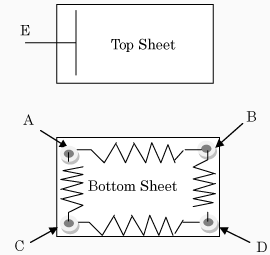Hi, Expert,
In the AM3358 datasheet, table Table 5-16. TSC_ADC Electrical Parameters, there is maximum pen touch detection resistance specification which is 2K Ohm. What is the definition of this resistance? is it the resistance measured from the TSC_SENSE to any of the other 4 pins for 5-wire touch screen?
If one touch screen have resistance larger than 2K ohm measured from TSC_SENSE to any of the other 4 pins, say 3K Ohm, what is the consequence of this? will pen-touch event be missed ? or ADC measurement result will be affected? if pen-touch event detection is not affected, can we elongate the open-delay to get an accurate ADC reading?
Thanks,
Peng.


